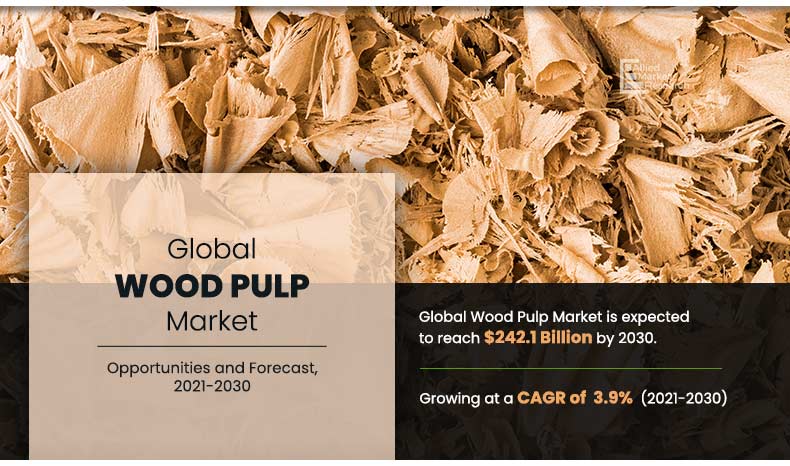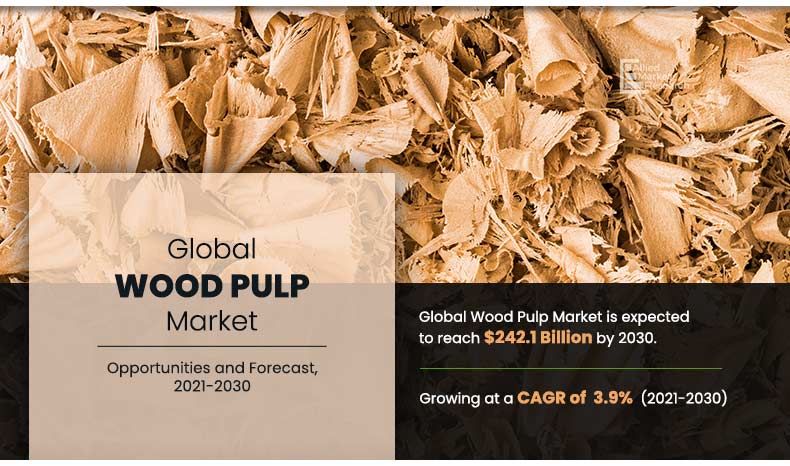ما الذي يدفع النمو في سوق اللب العالمي؟

استكشاف مشهد سوق اللب العالمي
فهم الديناميكيات الحالية لسوق اللب العالمي
يشهد سوق اللب العالمي تحولات كبيرة في الآونة الأخيرة.
أحدث اتجاهات السوق في صناعة اللب العالمية
- ممارسات التوريد المستدام تكتسب زخماً متزايداً.
- زيادة الطلب على مواد التعبئة والتغليف.
- التطورات التكنولوجية التي تؤثر على كفاءة الإنتاج.
تشير هذه الاتجاهات إلى التركيز المتزايد على الاستدامة والابتكار في سوق اللب العالمي.
اللاعبون الرئيسيون الذين يقودون النمو في سوق اللب العالمي
- الشركة الدولية للورق
- ستورا إنسو
- شركة UPM-Kymmene
وقد كان لهؤلاء اللاعبين الرئيسيين دور فعال في دفع عجلة النمو والابتكار في سوق اللب العالمي.
تتسم سوق اللب العالمية بديناميكية عالية، حيث تلعب الشواغل البيئية والتقدم التكنولوجي دورًا حاسمًا في تشكيل مشهدها. وتتزايد أهمية الممارسات المستدامة والحلول المبتكرة في تلبية الاحتياجات المتطورة لهذه الصناعة.
كانت الشركة الدولية للورق، وهي لاعب رئيسي في صناعة اللب، في طليعة ممارسات التوريد المستدامة، بما يتماشى مع الطلب المتزايد على المنتجات الصديقة للبيئة. وهذا النهج الاستراتيجي لا يعود بالنفع على الشركة فحسب، بل يساهم أيضًا في تحقيق أهداف الاستدامة الشاملة للصناعة.
وتركز شركة Stora Enso، وهي لاعب رئيسي آخر في سوق اللب العالمي، على البحث والتطوير لتعزيز كفاءة عمليات الإنتاج. ومن خلال الاستثمار في التكنولوجيا، تهدف Stora Enso إلى تحسين جودة منتجاتها من اللب مع تقليل التأثير البيئي.
تتميز شركة UPM-Kymmene بالتزامها بالابتكار والاستدامة.
تحليل السوق والتوقعات الخاصة بصناعة اللب العالمية
تشير تقارير تحليل السوق إلى حالة مستقرة في سوق اللب العالمي.
يتوقع الخبراء نمو صناعة اللب العالمية في السنوات القادمة.
يُظهر الوضع الحالي لسوق اللب العالمي ثبات الطلب والعرض.
تشير التوقعات إلى اتجاه تصاعدي في صناعة اللب العالمية بسبب زيادة الاستهلاك.
تؤكد تقارير تحليل السوق على أهمية ممارسات الاستدامة في قطاع اللب.
تتوقع التوقعات ارتفاعًا في حجم السوق لصناعة اللب العالمية مدفوعة بعوامل مختلفة.
تعكس اتجاهات سوق اللب العالمية التركيز على طرق الإنتاج الصديقة للبيئة لتحقيق النمو المستدام.
تشير التوقعات المستقبلية لصناعة اللب العالمية إلى مسار إيجابي.
يواصل اللاعبون المهيمنون في سوق اللب العالمي الاستثمار في التقنيات المبتكرة.
تسلط تقارير تحليل السوق الضوء على أهمية الشراكات الاستراتيجية للتوسع في السوق.
تشير التوقعات إلى توقعات واعدة لصناعة اللب العالمية مع التقدم التكنولوجي.
يتوقع خبراء الصناعة نموًا مطردًا في حجم السوق في صناعة اللب العالمية.
من المتوقع أن يشهد سوق اللب العالمي نموًا كبيرًا بناءً على الاتجاهات الحالية.
تتوافق التوقعات الخاصة بصناعة اللب العالمية مع الطلب المتزايد على المنتجات الورقية على مستوى العالم.
تسلط تقارير تحليل السوق الضوء على التحديات المحتملة التي تواجه سوق اللب العالمي وتقدم حلولاً للنمو المستدام.
الممارسات المستدامة والتطورات التكنولوجية في إنتاج اللب
تعطي جهود الاستدامة الأولوية للممارسات الصديقة للبيئة في صناعة اللب العالمية. يهدف المصنعون إلى الحد من الأثر البيئي.
يقلل تطبيق مصادر الطاقة المتجددة من البصمة الكربونية ويعزز تدابير الاستدامة. الإدارة الفعالة للمياه أمر بالغ الأهمية لممارسات إنتاج اللب المستدامة.
الاستثمار في البحث والتطوير يؤدي إلى تقنيات مبتكرة في إنتاج اللب. تعمل الأتمتة على تبسيط العمليات وتقليل هدر الموارد بشكل فعال.
تعمل الرقمنة على تعزيز أنظمة المراقبة، وتحسين كفاءة الإنتاج وتقليل استهلاك الطاقة. تساعد طرق إعادة التدوير المتقدمة على تقليل النفايات والتلوث البيئي.
ظهور بدائل قابلة للتحلل الحيوي استجابة للاستدامة الطلبات والمستهلك الأفضليات. تهدف هذه البدائل إلى تقليل الاعتماد على مصادر اللب التقليدية.
تعزز التطورات التكنولوجية مثل أنظمة الحلقة المغلقة الحفاظ على الموارد والحد من النفايات. وتهدف هذه الأنظمة إلى خلق دورة إنتاج لب الورق أكثر استدامة وكفاءة.
يعمل دمج الذكاء الاصطناعي والتعلم الآلي على تحسين الصيانة التنبؤية والأداء التشغيلي. تعمل هذه التقنيات على زيادة الإنتاجية مع تقليل التكاليف التشغيلية.
تهدف التحسينات المستمرة في تقنيات إنتاج اللب إلى تحقيق التوازن بين الحفاظ على البيئة والجدوى الاقتصادية. وتسير الممارسات المستدامة والتقدم التكنولوجي جنبًا إلى جنب لتشكيل مستقبل صناعة اللب العالمية.
ديناميكيات التسعير ورؤى سلسلة التوريد في سوق اللب العالمي
تُعد ديناميكيات التسعير في سوق اللب العالمي من العوامل الحاسمة التي تؤثر بشكل مباشر على العرض والطلب. ويمكن أن تؤثر التغيرات في التسعير على ربحية منتجو اللبمما يؤثر على مستويات الإنتاج والقدرة التنافسية في السوق. على سبيل المثال، عندما ترتفع أسعار اللب، قد يبحث المصنعون عن مواد بديلة، مما يؤثر على الطلب على اللب. وعلى العكس من ذلك، قد يؤدي انخفاض الأسعار إلى ارتفاع الطلب ولكن قد يقلل من هوامش الربح للمنتجين.
تحليل سلسلة التوريد الخاصة باللباب توفر الصناعة رؤى قيمة في إنتاج وتوزيع واستهلاك منتجات اللب. من خلال دراسة سلسلة التوريد، يمكننا تحديد أوجه القصور وتحسين العمليات وتعزيز ممارسات الاستدامة. يسمح فهم تدفق المواد الخام وعمليات التصنيع ولوجستيات النقل وأنماط استهلاك المستخدم النهائي بتحسين عملية صنع القرار والتخطيط الاستراتيجي داخل الصناعة.
وتتأثر ديناميكيات التسعير بمجموعة متنوعة من العوامل، بما في ذلك الظروف الاقتصادية العالمية، وديناميكيات العرض والطلب، وأسعار صرف العملات، واللوائح البيئية. كما تلعب اتجاهات السوق، مثل التحولات نحو الممارسات المستدامة والرقمنة المتزايدة، دورًا مهمًا في تشكيل ديناميكيات التسعير في صناعة اللب. من خلال مراقبة هذه العوامل، يمكن لأصحاب المصلحة توقع تقلبات السوق بشكل أفضل وتعديل استراتيجياتهم وفقًا لذلك.
يكشف تحليل سلسلة التوريد في صناعة اللب عن معلومات أساسية حول مصادر المواد الخام، وكفاءة الإنتاج، وتكاليف النقل، وقنوات التوزيع في السوق. من خلال رسم خريطة لسلسلة التوريد بأكملها، يمكن للشركات تحديد فرص توفير التكاليف وتقليل الفاقد وتحسين جودة المنتج وتعزيز الكفاءة الإجمالية. هذه النظرة الشاملة لسلسلة التوريد
القسم 5: التحديثات التنظيمية وفرص النمو المستقبلية في سوق اللب العالمي
التحديثات التنظيمية
شهدت سوق اللب العالمية مؤخرًا فرض لوائح جديدة بشأن ممارسات التوريد المستدامة. وتهدف اللوائح إلى تعزيز أساليب الإنتاج الصديقة للبيئة. وتتطلب هذه التحديثات من مصنعي اللب الالتزام بمبادئ توجيهية صارمة لتوريد المواد الخام. وينصب التركيز على الاستدامة وجهود الحفاظ على البيئة في عملية الإنتاج. يعد الامتثال لهذه اللوائح أمرًا بالغ الأهمية لاستمرارية صناعة اللب على المدى الطويل.
يتمثل أحد التحديثات التنظيمية الأخيرة في تنفيذ مبادئ توجيهية أكثر صرامة لإدارة الغابات. ويركز هذا التحديث على ضمان الحصول على خشب اللب من غابات تدار بطريقة مسؤولة. ويهدف إلى منع إزالة الغابات وتعزيز الحفاظ على التنوع البيولوجي. وتهدف اللائحة أيضًا إلى الحد من الأثر البيئي لإنتاج اللب.
ومن التغييرات التنظيمية الهامة الأخرى زيادة التعريفات الجمركية على منتجات اللب المستوردة. يؤثر هذا التغيير على ديناميكيات التجارة العالمية في صناعة اللب. تؤثر التعريفات المرتفعة على استراتيجيات التسعير والمنافسة في السوق. يجب أن يتكيف المصنعون مع هذه التغييرات ليظلوا قادرين على المنافسة في السوق العالمية.
فرص النمو المستقبلية
وبالنظر إلى المستقبل، تستعد صناعة اللب للنمو في عدة مجالات رئيسية. تكمن إحدى الفرص الرئيسية في الطلب على منتجات اللب المستدامة. حيث يعطي المستهلكون أولوية متزايدة للمنتجات الصديقة للبيئة، مما يخلق سوقًا لبدائل اللب المستدامة. يمكن للمصنعين الذين يستثمرون في الممارسات المستدامة الاستفادة من هذا الطلب المتزايد.
كما توفر التطورات التكنولوجية فرصًا للنمو في سوق اللب. يمكن للابتكارات في عمليات إنتاج اللب، مثل تطوير المواد الخام البديلة، أن تعزز الكفاءة والاستدامة. يمكن للشركات التي تتبنى الابتكارات التكنولوجية أن تكتسب ميزة تنافسية في الصناعة.
أسئلة وأجوبة حول سوق اللب العالمي
هل من المتوقع أن يزداد الطلب على اللب العالمي في السنوات القادمة؟
من المتوقع أن يشهد سوق اللب العالمي ارتفاعًا في الطلب في السنوات القادمة بسبب نمو صناعة التعبئة والتغليف، خاصةً مع زيادة أنشطة التجارة الإلكترونية في جميع أنحاء العالم. بالإضافة إلى ذلك، يؤدي الوعي المتزايد بالممارسات المستدامة إلى توجيه السوق نحو حلول التعبئة والتغليف الصديقة للبيئة، مما يزيد من الطلب على منتجات اللب.
ما هي العوامل التي تدفع تقلبات الأسعار في سوق اللب العالمي؟
هناك عدة عوامل تؤثر على تقلبات الأسعار في سوق اللب العالمي، بما في ذلك ديناميكيات العرض والطلب، وتكاليف الإنتاج، وتقلبات العملة، والسياسات التجارية، واللوائح البيئية. يمكن أن تؤدي التغيرات في هذه المتغيرات إلى تقلبات كبيرة في الأسعار في سوق اللب، مما يؤثر على كل من المنتجين والمستهلكين في هذه الصناعة.
كيف تؤثر اللوائح التنظيمية ومبادرات الاستدامة على سوق اللب العالمي؟
تؤثر اللوائح التنظيمية ومبادرات الاستدامة بشكل كبير على سوق اللب العالمي، مع التركيز المتزايد على ممارسات التوريد المستدامة، ولوائح إزالة الغابات، والحد من البصمة الكربونية. تتبنى الشركات بشكل متزايد أساليب إنتاج اللب الصديقة للبيئة للالتزام بالمعايير البيئية الصارمة، وتلبية تفضيلات المستهلكين للمنتجات المستدامة، وضمان استمرارية السوق على المدى الطويل.
ما هو الدور الذي يلعبه الابتكار التكنولوجي في سوق اللب العالمي؟
لقد أحدثت التطورات التكنولوجية ثورة في سوق اللب العالمي من خلال تحسين عمليات الإنتاج وتعزيز الكفاءة وتقليل الأثر البيئي. تعمل الابتكارات مثل المصافي الحيوية والرقمنة وتقنيات إعادة التدوير المتقدمة على إعادة تشكيل صناعة اللب، مما يؤدي إلى الاستدامة والفعالية من حيث التكلفة وتنويع المنتجات لتلبية المتطلبات المتطورة للمستهلكين والمتطلبات التنظيمية.
كيف تؤثر ديناميكيات التجارة العالمية على سوق اللب في جميع أنحاء العالم؟
تؤثر ديناميكيات التجارة العالمية تأثيرًا عميقًا على سوق اللب العالمي، وتؤثر على سلاسل التوريد واستراتيجيات التسعير واتجاهات السوق. يمكن للاتفاقيات التجارية، والتعريفات الجمركية، والتوترات الجيوسياسية، والتحولات في تفضيلات المستهلكين في مختلف المناطق أن تغير بشكل كبير من ديناميكيات سوق اللب، مما يشكل المشهد التنافسي والقرارات الاستراتيجية للاعبين الرئيسيين في الصناعة.
في الختام، قمنا باستكشاف المشهد الديناميكي لسوق اللب العالمي واللاعبين الرئيسيين فيه. تقدم تقارير تحليل السوق رؤى وتوقعات لنمو الصناعة. تعمل جهود الاستدامة والتقدم التكنولوجي على إعادة تشكيل إنتاج اللب. تؤثر ديناميكيات التسعير وشفافية سلسلة التوريد على السوق بشكل كبير. يعد البقاء على اطلاع دائم بالتغييرات التنظيمية وفرص النمو أمرًا حيويًا لنجاح الصناعة.






